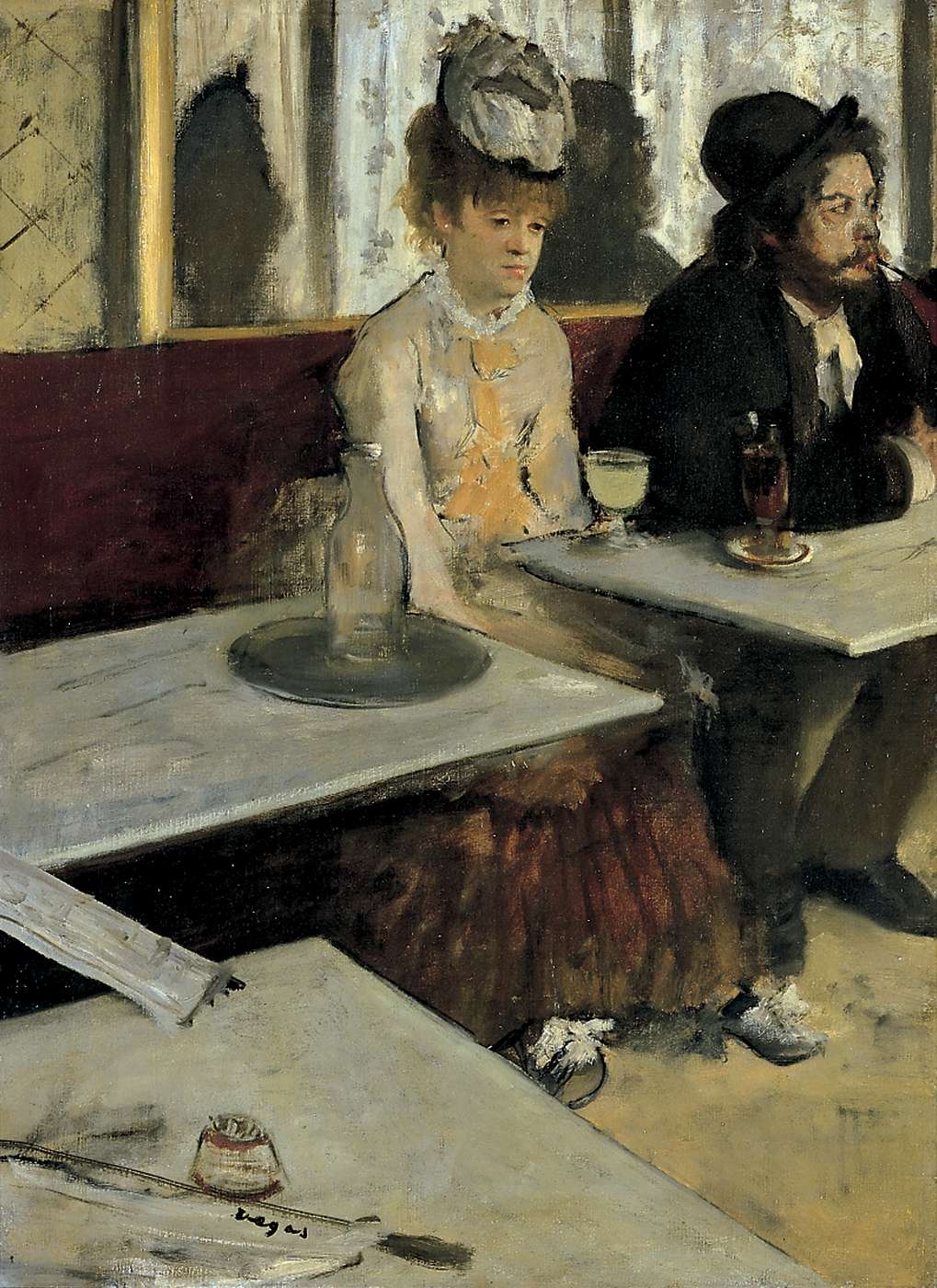- L'Absinthe
Infobox Painting|

title=L'Absinthe
artist=Edgar Degas
year=1876
type=Oil on canvas
height=92
width=68
city=Paris
museum=Musée d'Orsay "L'Absinthe"—also known as "The
Absinthe Drinker" or "Glass of Absinthe"—is a painting byEdgar Degas . Originally called "A sketch of a French Café", then "Figures at Café", the title was finally changed in1893 to "L’Absinthe" (the name the piece is known by today). The work is now in the permanent collection of theMusée d'Orsay inParis .Depiction
Painted in
1876 , it depicts two figures, a woman and man, who sit in the center and right of this painting, respectively. The man, wearing a hat, looks right, off the canvas, while the woman, dressed formally and also wearing a hat, stares vacantly downward. A glass filled with the titular greenish liquid sits before her. The painting is a representation of the increasing social isolation in Paris during its stage of rapid growth.People in the picture
The woman in the painting is the actress Ellen Andrée, the man Marcellin Desboutin, painter, engraver, and, at the same time, celebrated bohemian character. The café where they are taking their refreshment is the Café de la Nouvelle-Athènes in
Paris .Criticisms
In its first showing in 1876 it was panned by critics, who called it ugly and disgusting. It was put into storage until an 1892 exhibit where it was booed off the easel.
It was shown again in
1893 inEngland (this time titled “L'Absinthe”); there, it sparked controversy. The persons represented in the painting were considered by English critics to be shockingly degraded and uncouth. Many regarded the painting as a blow to morality; this was the general view of such Victorians as SirWilliam Blake Richmond andWalter Crane when shown this painting in London. The reaction is an instance of the deep suspicion with which Victorian England had regarded art in France since the early days of theBarbizon School and the need to find a morally uplifting lesson in works of art that was typical of the age. Many English critics viewed it as a warning lesson against absinthe and the French in general. George Moore described the woman in the painting: “What awhore !” He added, “the tale is not a pleasant one, but it is a lesson.”See also
*"Automat"
References
*Conrad III, Barnaby; (1988). "Absinthe History in a Bottle". Chronicle books. ISBN 0-8118-1650-8 Pg. 43–50
*Phil Baker; (2001). "The Book of Absinthe: A Cultural History". Grove Press books. ISBN 0-8021-3993-0 Pg. 121–24Articles
* [http://www.absinthefever.com/green-fairy Green Fairy: The symbol of liberté] — Examines "L'Absinthe" as a fitting example of the “nervous fear that the decadent ways of the Continent might reach the shores of the British Isles.”
Wikimedia Foundation. 2010.
